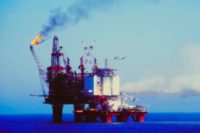Tricky offshore transportation project brings additional hazards

Photo credit: Koil Energy
All work performed in the energy sector presents its own challenges and hazards to both personnel and the environment, and these challenges and hazards can be amplified when this work is applied offshore. While the offshore energy field is still one of the most dangerous industries to work in on the planet, major strides have been made by improving the safety of its workers and the environment.
Specialists in deepwater production and distribution equipment have a duty to optimize its work standards and there is a recent project that represents a strong example in doing so.
Koil Energy Solutions was tasked with installing an umbilical carousel on a barge so that clients could transport a large section of umbilical from the manufacturer’s location in Houston to their offshore vessel located in a deep-water port in Alabama.
Safety starts at the very beginning
Carousels are used to store umbilical cables and larger ones are typically placed on dry land. A great way to start analysis of the safety aspects of a project is performing a job hazard review with the full team. This way, major concerns could be revealed at the beginning of the project, which in this case included:
- There would be work on and on top of rotating equipment.
- There would be work at heights over four-feet, going as high as 18-feet.
- There would be work on a barge floating on water.
- All of the clients, the U.S. Coast Guards, OSHA’s Health Safety and Environmental (HSE) Requirements, and our own company requirements had to be met.
- There would be space restrictions and limited space on the barge.
- All the classic slips, trips and fall hazards.
How a carousel works
To help understand why the safety measures taken are important, it would help to describe how an offshore carousel works first. An umbilical cable is pulled from its resting location up through a tower and then pushed down a slide to be spooled, or wound up, on the carousel as it rotates. The process would then be reversed to un-spool the umbilical off the carousel. While spooling, there are two to three technicians located on the carousel to guide the umbilical into place. Another technician is located in the cab of the tower to operate the carousel and drive unit on the tower to move the umbilical during spooling operations.
Creative, meaningful solutions
One interesting aspect that arose when discussing solutions was the realization that the standard HSE solutions for most of these hazards presented additional issues instead of solving them.
One example was that fall protection requires a harness and tie-off when working at heights. At the time, the only thing to tie off to were upright columns that would constantly be rotating, which would cause personnel to have to move their tie-off point every 30-seconds. This is not only a major distraction for them while they were focusing on placing the umbilical, but this also raised the tripping and fall hazards. To resolve this, a system of stainless-steel barrier cables were installed around the columns as personnel went up to act as railing to prevent falls. Following this was the addition of heavy-duty plastic fencing around the carousel to prevent falling objects and increase personnel protection. So instead of using a harness with lanyards as fall protection an upgrade was made by installing fall prevention railing.
A second example is if there was a need to retrieve an injured employee from the carousel in the event of an emergency. Again, the traditional use of a body harness so a retrieval device can be attached to the D-Ring for retrieval would not be practical due to the work being done over water and simultaneously requiring a life vest. The combination of a life vest and a body harness causes a major reduction in motion, thus higher levels of fatigue and frustration. The solution here came in the form of a Coast Guard-approved, CO2 inflatable life vest with an integrated D-Ring for retrieval. This removed most of the restrictions and reduced the weight by two-thirds.
After calculations were made by our engineers for the wire railing and the design for the attachments, along with receiving the new vests, the plan was reviewed with the Coast Guard, OSHA, and the clients for approval.
When it’s done right
As a result of this intentional and collaborative work, the carousel and tower was erected on the barge, the umbilical was spooled and was transported to the new location. It was then unspooled on the ocean deployment vessel, where finally the disassembly of the equipment from the barge was made with no loss of time nor injuries to personnel or equipment.
A good team with a lot of ideas went into finding the right solution for a job well done.
Looking for a reprint of this article?
From high-res PDFs to custom plaques, order your copy today!




